Appearance
Getting started with EarthCODE
EarthCODE (Earth Science Collaborative Open Development Environment) provides the tools to create, find, and collaborate on Earth Observation experiments.
- You can access data, and develop your workflows, run your experiments on integrated EO platforms with Network of Resources (NoR) sponsored compute.
- You can store results in the ESA Project Results repository (PRR).
- You can explore state-of-the-art data, workflows, and projects on the Open Science Catalog. You can also publish your own data, workflows, and project information to it.
- You can engage the EarthCODE and broader EO community via the EarthCODE Forum
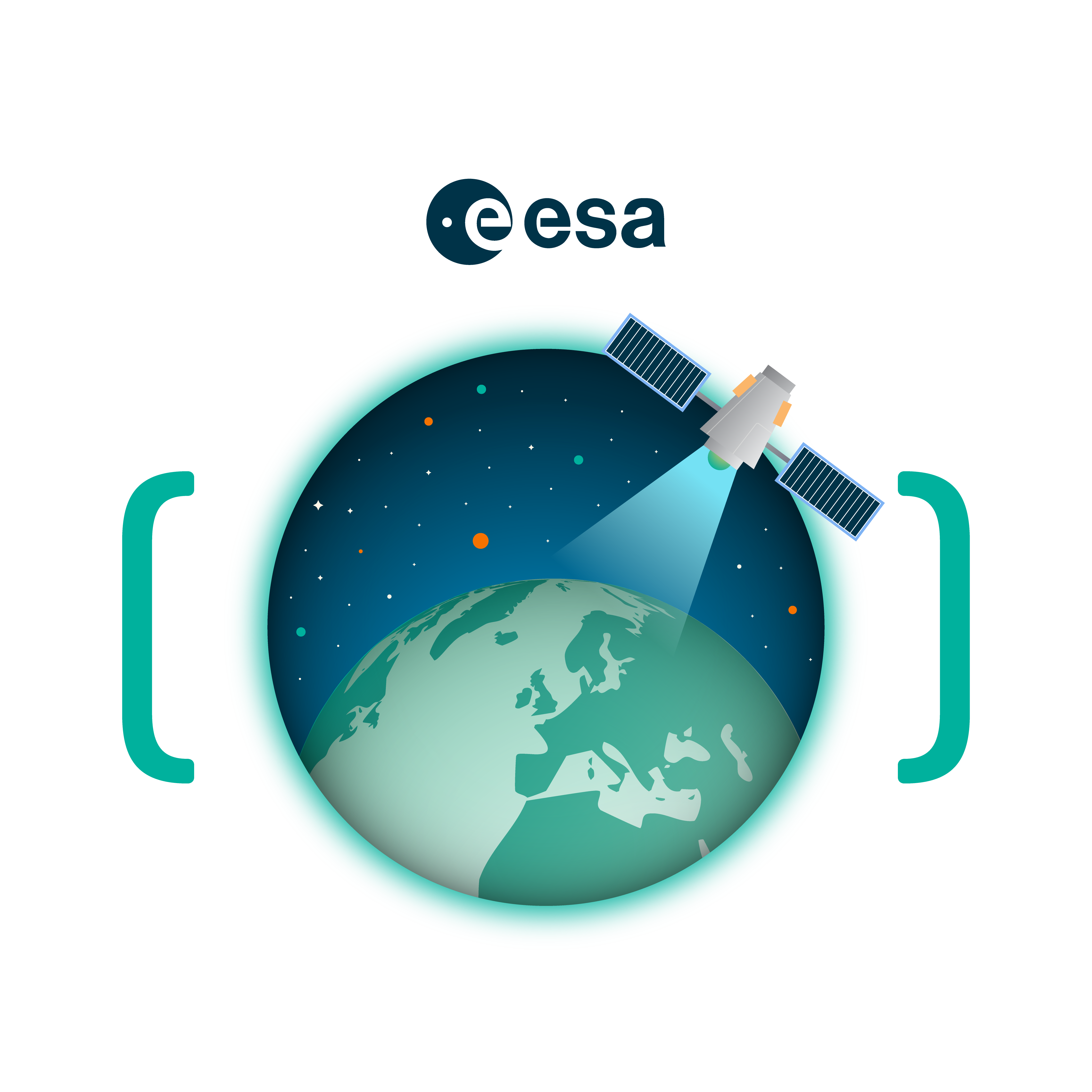
Doing Open Science shouldn't be hard, and EarthCODE makes it easy!
Welcome to EarthCODE!
Whether you are a scientist, a member of a research project, a developer or simply someone interested in using EarthCODE, this guide will help you get started.
There are two ways to explore EarthCODE:
Follow a step-by-step onboarding pathway – If you're new to EarthCODE, we recommend following these steps to build a strong foundation:
Jump straight to what you need – If you’re short on time or already familiar with EarthCODE, you can go directly to specific topics:
- 10 minutes to EarthCODE – A quick overview to get started fast
- Accessing EarthCODE – Accessing EarthCODE and Platforms
- Frequently Asked Questions – Help when you need it
Explore the EarthCODE Platform Ecosystem – We have a growing ecosystem of platforms to provide FAIR and Open Earth Observation science tools and infrastructure to explore.
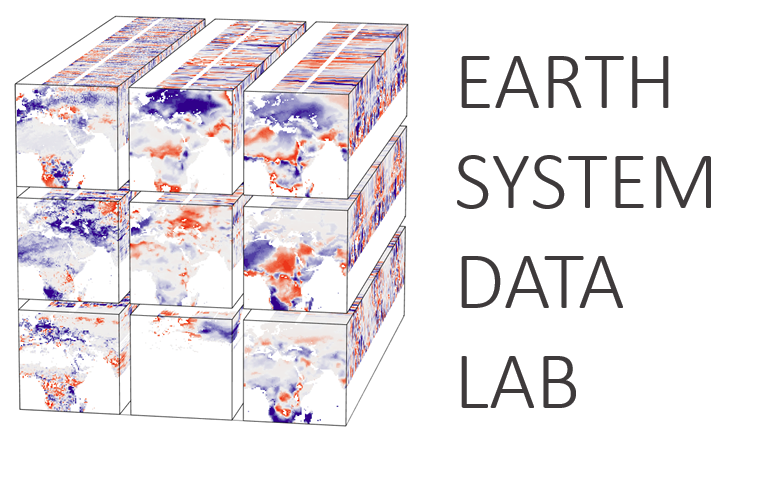
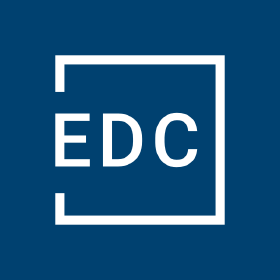

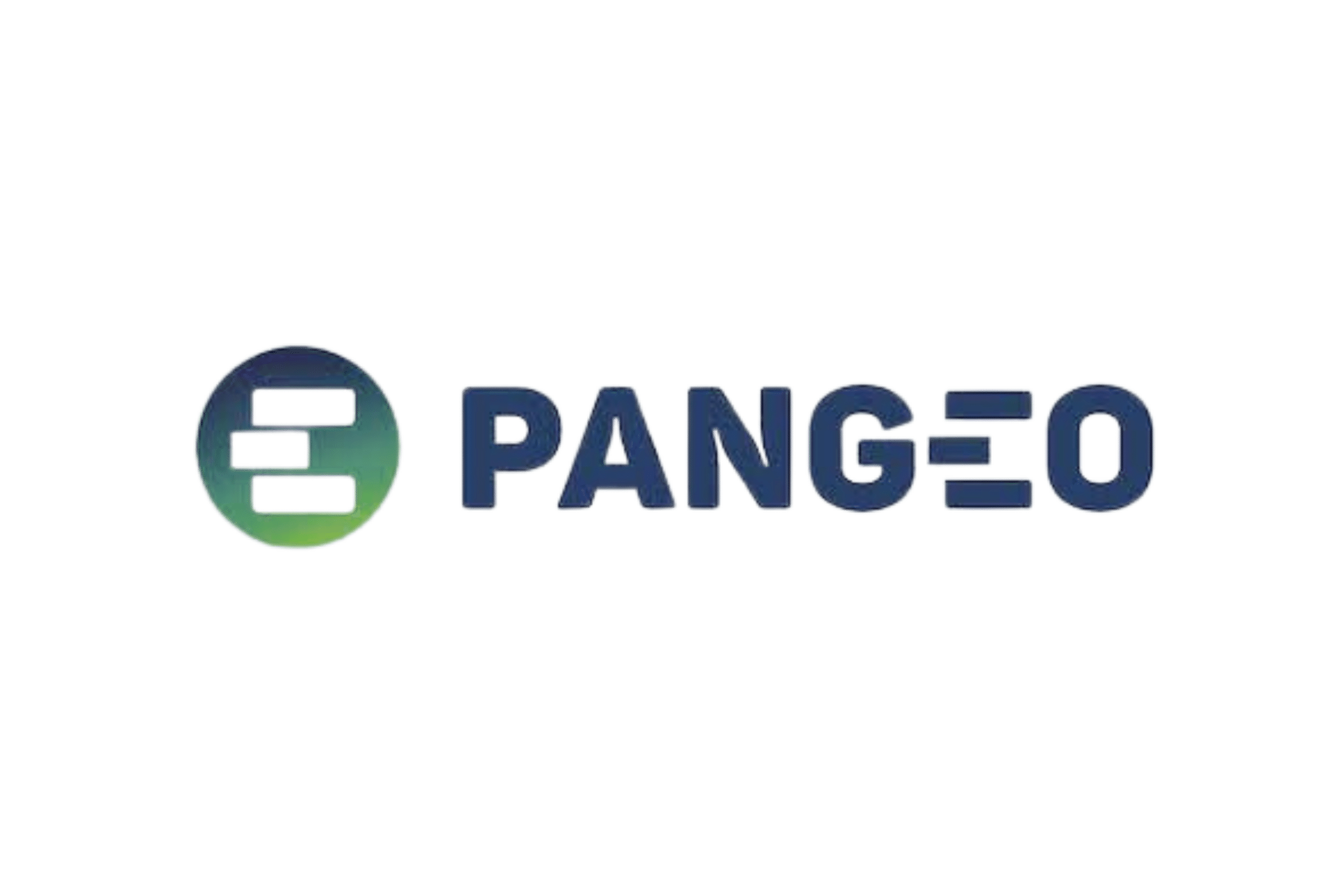

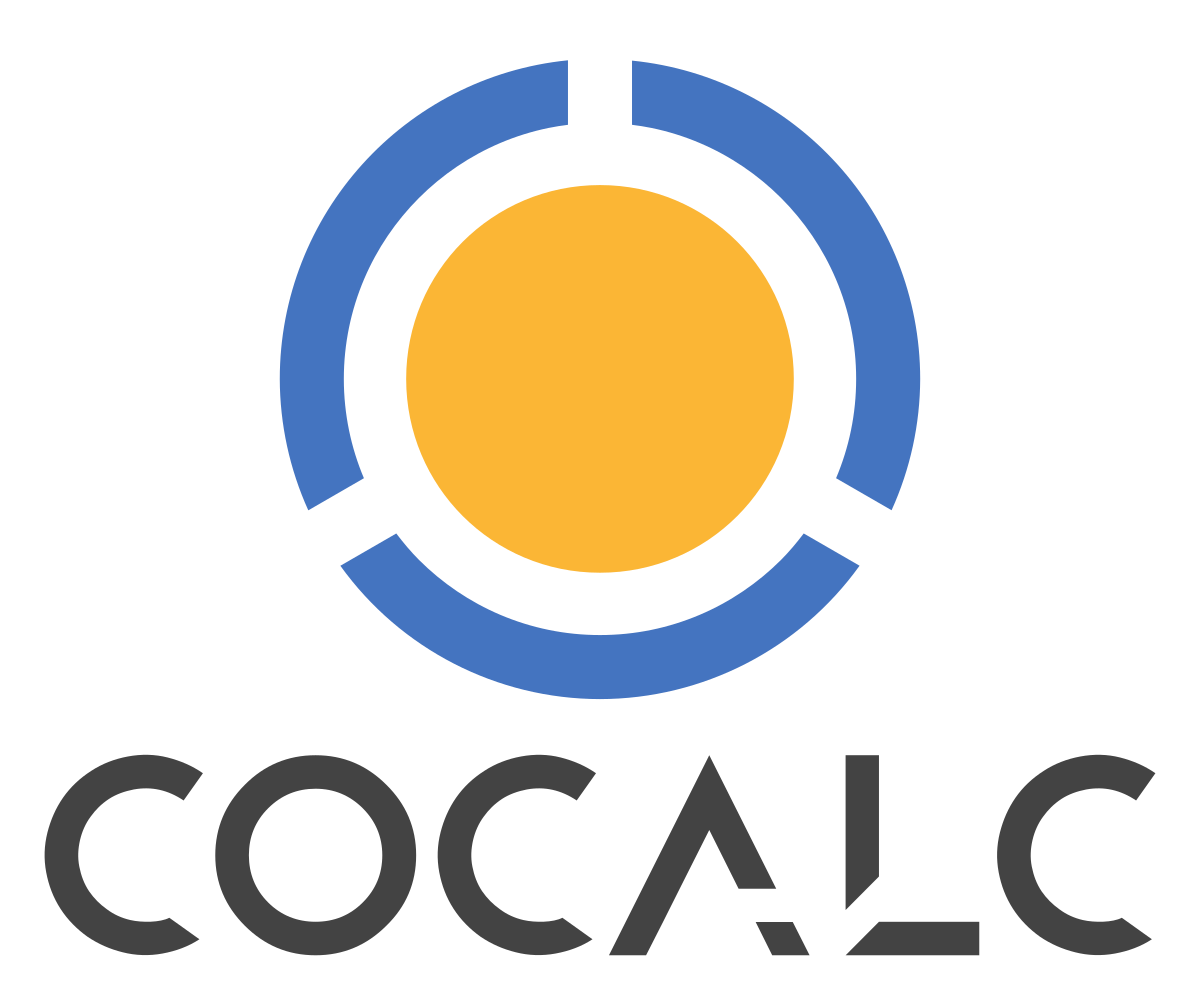
Whichever path you choose, this guide will support your journey as you engage with the EarthCODE community.
Step 1: Understand EarthCODE Terminology
Familiarize yourself with the key terms and concepts used in EarthCODE. Understanding the terminology will help you navigate the platform and engage with the community effectively.
EarthCODE System Overview
EarthCODE provides an integrated ecosystem designed to support scientists through the full lifecycle of doing Open Science.
Reusability of Workflows Across Platforms
Users can reproduce, reuse and run workflows through EarthCODE if they are published via an EarthCODE integrated platform and if the user has sufficient resources through self-sponsorship or sponsorship from the Network of Resources. This is why it is important to consider what tooling/platforms one uses so as to ensure reuse-ability from the start of the project.
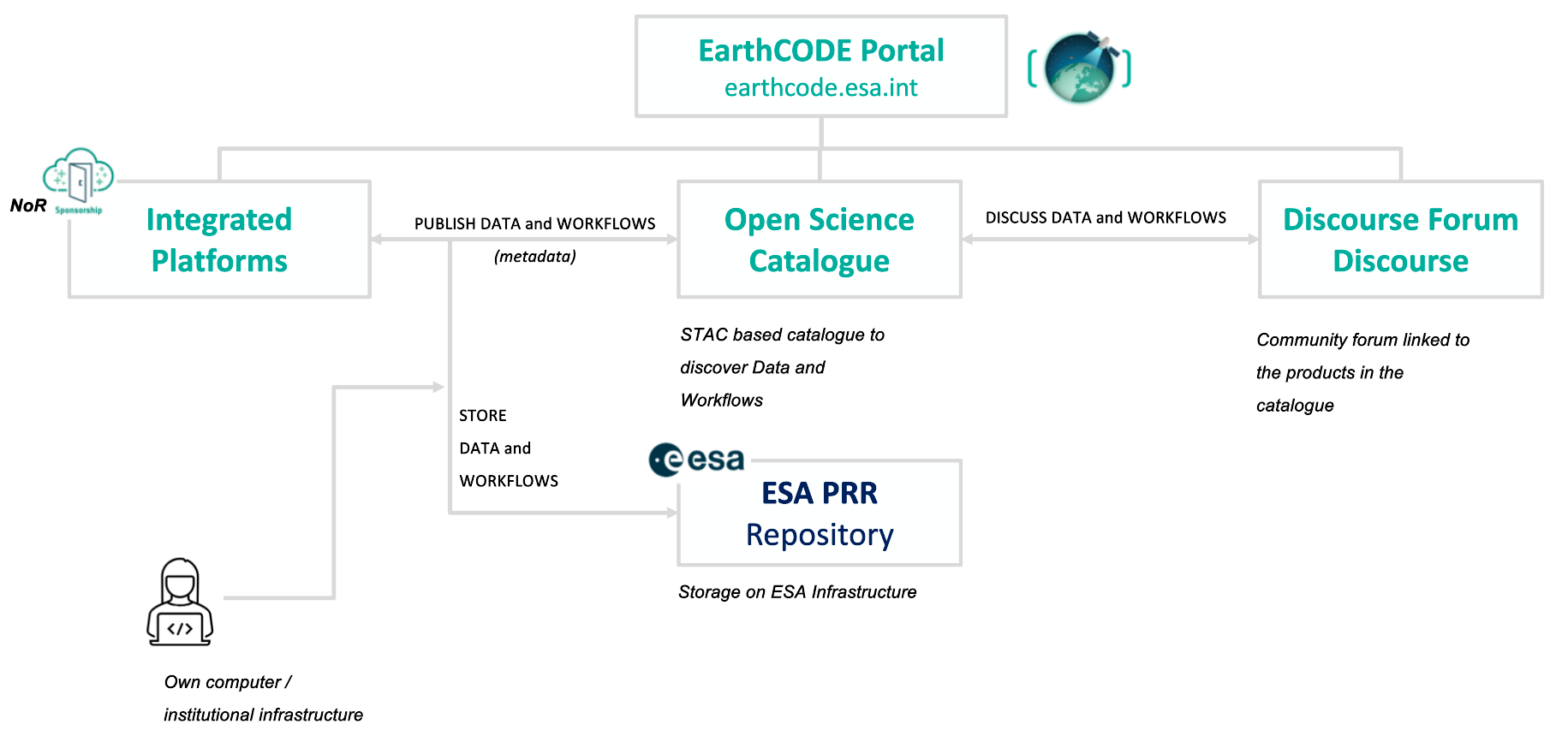
The EarthCODE Portal (earthcode.esa.int), is where users access all EarthCODE services. Through this portal, researchers can explore integrated platforms, access the Open Science Catalog, and engage with peers via the Discourse community forum. The portal also hosts general information about EarthCODE, including updates, events, and documentation.
EarthCODE provides access to a set of integrated EO cloud platforms, each offering unique tools and datasets. As an EarthCODE integrated platform they provide common capabilities: logging in with your EarthCODE account, accessing EO data (with variations in data offerings across platforms), a method for developing algorithms (referred to as workflows in EarthCODE), an automated way of publishing data and workflows to the Open Science Catalog and finally, the means of running EarthCODE published experiments. Access to computing resources and storage on these platforms is sponsored by ESA through the Network of Resources (NoR).
For those who prefer to work on their own systems—whether personal computers or institutional infrastructure—EarthCODE also supports manual publishing of data and workflows.
When your research is complete, you:
- (Optionally) Upload your datasets and workflows to the ESA Project Results Repository (PRR).
- Create and upload metadata describing your results to the Open Science Catalog, which link to your data and workflows.
Only ESA-funded projects or projects funded by the national members can publish to EarthCODE.
The ESA Project Results Repository (ESA PRR) is a long-term storage service provided by ESA to persistently host results from ESA-funded projects. Once users have completed their work, they can upload their datasets and workflows to the PRR to ensure they remain accessible and preserved over time. While publishing to the PRR is optional, it is strongly recommended for long-term availability and compliance with FAIR principles. A detailed guide to this process is available in the publication section.
The Open Science Catalog (OSC) is a public, web-based application that allows users to explore and access scientific datasets, workflows, and documentation produced through ESA-funded Earth Observation research. Researchers publish metadata describing their outputs to the Open Science Catalog, and after review, this metadata is made discoverable through the OSC. The catalog uses STAC to describe datasets and OGC API - Records for workflows. Through this rich metadata on the Open Science Catalog, resources are made FAIR. Additionally, the open science catalog is integrated with the EarthCODE platforms and allows users to reproduce experiments (run workflows that produce products) that they find on the catalog.
The Open Science Catalog only holds the metadata which points to the persistent storage repository with your dataset.
The EarthCODE Forum is a community space where users:
- Share insights and questions about datasets and workflows
- Link forum discussions directly to catalog entries
- Get help from the EarthCODE team and community
Each published item in the OSC can be linked to a discussion thread, enabling exposure and ongoing discussions about outputs.
Step 2: Explore EarthCODE
This step will help you become familiar with the platform's tools and resources, and how they integrate to support your research. The best way to follow our tutorials and learn about EarthCODE is by using one of the EarthCODE platforms. We recommend visiting the page where we explain how to choose the right tools and platforms for your work.
EarthCODE offers a variety of features, in the portal you will be able to find:
- Datasets: Access a variety of datasets available for your research needs and discovery.
- Computational Research: Use EarthCODE integrated platforms with advanced computational tools for Earth System Science on collaborative research environment
- Workflows : Easily find, publish and re-use FAIR workflows to enhance reproducibility and collaboration in research
- Community: Fostering a collaborative community dedicated to FAIR Open Science and sustainable innovation
By exploring these sections, you’ll better understand how to leverage EarthCODE’s resources and tools to support your research.
Tutorials
Explore the complete list of Tutorials and Examples for a practical introduction EarthCODE and its related tools.
Step 3: Who is EarthCODE For?
EarthCODE is designed for the community of Earth‑science practitioners, including ESRIN Science Hub members, the ESA Science Hub and teams working on ESA‑funded projects to enable them to do science and publish their results. A key stakeholder group are the ESA Science Clusters which aim at promoting networking, collaborative research, and fostering international collaboration in various Earth science domains, including: atmosphere, ocean, carbon, water cycle, polar, extremes and natural disasters, biosphere, land and agriculture, solid and magnetic earth. Clusters involve different ESA funded projects and activities bringing together expertise, data and resources in a synergistic manner.
There are two key type of roles within EarthCODE:
Scientists, EarthCODE is a platform to: Do science. Publish science. Discover data and code. Use other people’s data and code in an ethical manner. Discuss science. Collaborate on science. Learn about FAIR and Open Science.
Developers, EarthCODE is a space to: Expand the open-source ecosystem. Contribute tools and workflows. Develop reusable components and workflows, and discover and re-use the existing ones in an ethical way. Build FAIR-by-design services for the Earth science community.
You can explore what your role is in the EarthCODE community below:
Who's EarthCODE For:

Community
Understand the opportunities and possibilities within the EarthCODE community. In this sub-step, you will learn how to identify where you can contribute and how collaboration within the community can enhance your research. This section will help you understand how you can actively participate in shaping the EarthCODE ecosystem.
Step 4: Start Experimenting with EarthCODE
Once you’ve understood your role and the resources available, it's time to experiment! Use EarthCODE’s tools and platforms to enhance your projects. Bring visibility to your research by experimenting with data, workflows, and collaborative features. This step is all about applying what you've learned and experimenting with real data in EarthCODE, contributing to the ecosystem through hands-on work.
Open the EarthCODE Portal
Sign in with your GitHub account at https://earthcode.esa.int to:- Access the Open Science Catalog to browse and download curated Earth‑observation datasets
- Explore the platforms offered by EarthCODE and make a NoR request to start doing science on it
- Find out more about the project, current news and upcoming events
Onboard your project
- Post a brief introduction, information about your project and questions you have in the
Technical Supportcategory of the EarthCODE Forum. - Get in touch for onboarding support, fill in the short contact form at https://earthcode.esa.int/contact or e‑mail earth-code@esa.int.
- Post a brief introduction, information about your project and questions you have in the
Troubleshooting
If you hit a blocker, check the Frequently Asked Questions section first.
Still stuck? Ask in the forum or drop us a line at the support address above.